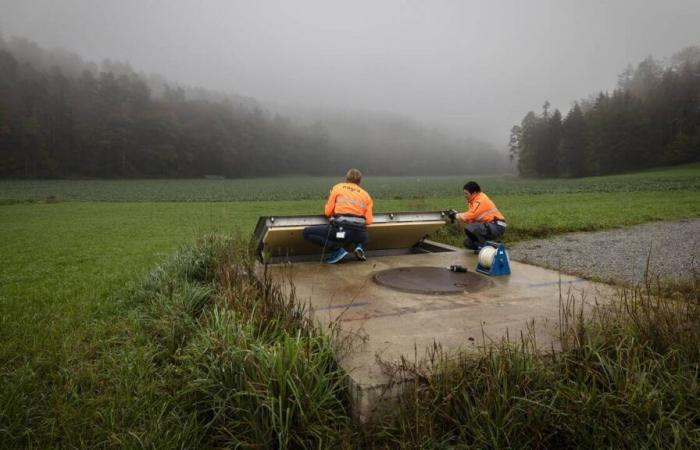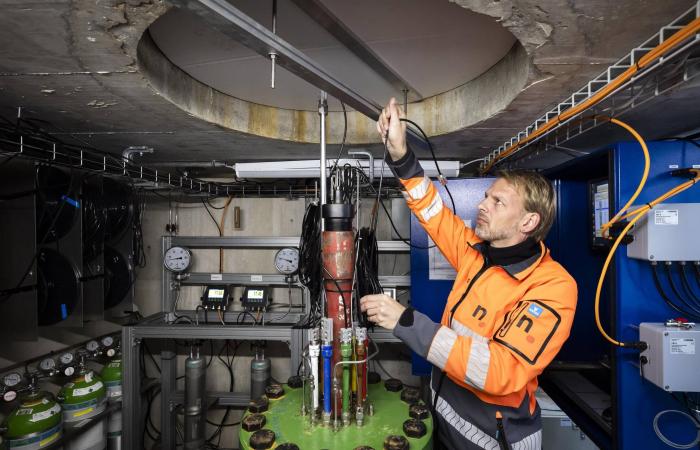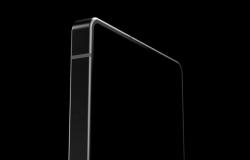In September 2022: The Swiss site of the future nuclear waste repository is known
The history of the last 2.6 million years
A research team also including scientists from ETH Zurich and the universities of Basel and Bern analyzed the sediments extracted by the Nagra near Bülach in the Zurich region. The core, 278 meters long, traces almost the entire geological history of the Quaternary, i.e. the last 2.6 million years. The scientists were particularly interested in the sediments deposited in an elongated lake which must have extended to Bülach, a kind of paleo-Greifensee.
This trough was first dug by Alpine glaciers, before being filled with sedimentary deposits. Two questions then arose: how old is this trough? And was it emptied during subsequent glacial advances?
Indeed, even if current climate signals indicate warming, a new cold period could occur in the future. A deep storage site for radioactive waste must remain safe for a million years, even in the face of further glacial advances.
Also read: Nagra justifies the choice of northern Lägern for the burial of nuclear waste
No further erosion
To determine the age of the sediments, the scientists used a sophisticated method that relies on the concentrations of helium-4 in tiny amounts of water contained in the sediment’s pores.
According to these results published in the journal Geologythe sedimentary layers of the paleo-Greifensee are approximately 600,000 years old. They are therefore significantly older than the advances of the last ice age.
Described as the Strassberg trough by specialists, this basin has ceased to be eroded. The clay level at Opalinus, located more than 500 meters deep and deposited around 174 million years ago, has remained intact. In other words: according to current knowledge, even an exceptional advance of the Rhine and Linth glacier, coming from Graubünden and the canton of Glarus, would not be enough to dislodge the nuclear waste possibly deposited in the clay at Opalinus.
On November 19, Nagra must submit its request for authorization to the Confederation for the construction of the depot planned on the northern slope of the Lägern massif. The choice of a site in Stadel, in the canton of Zurich, dates from September 2022. The start of construction work is planned for 2045.







